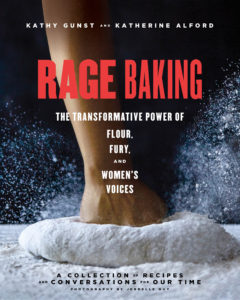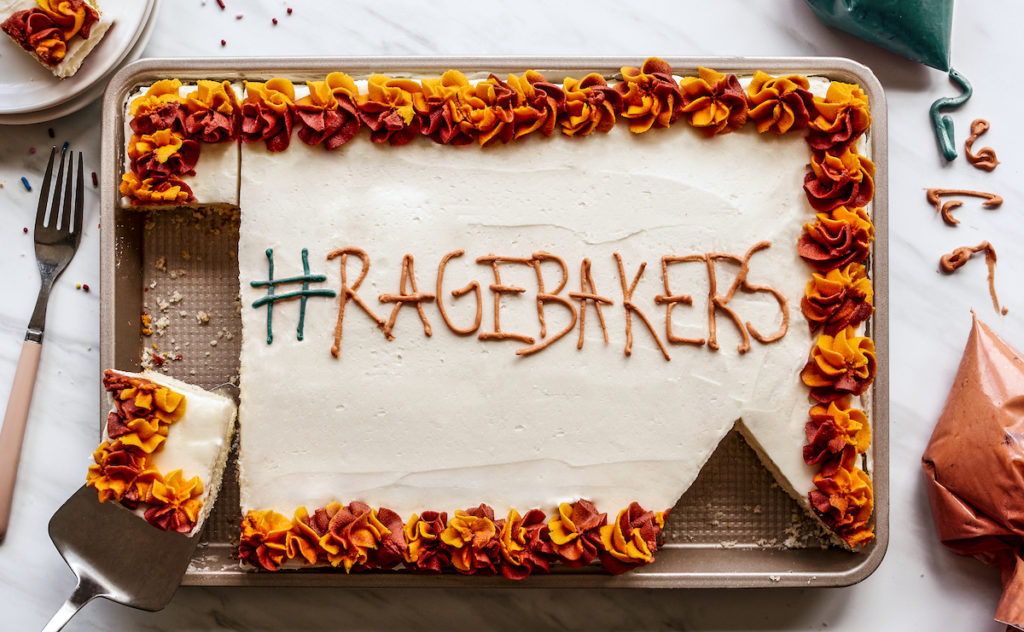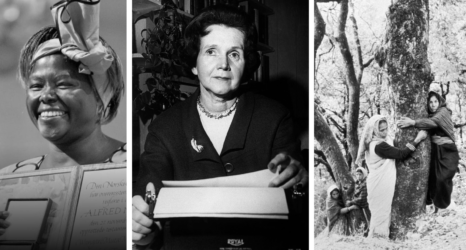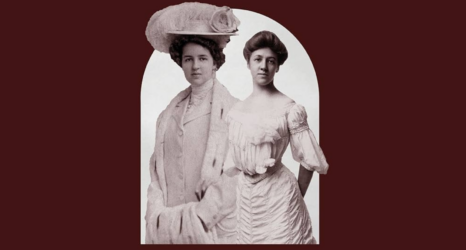
This piece is excerpted from RAGE BAKING: The Transformative Power of Flour, Fury, and Women’s Voices by Katherine Alford and Kathy Gunst. Copyright © 2020 by Kathy Gunst and Katherine Alford. Reprinted by permission of Tiller Press, an imprint of Simon & Schuster, Inc. All rights reserved.
I had two mothers. Not the loving lesbian kind, but two women—one black, one white—who came together by circumstance. When I was a toddler, my father took a powder (aka vanished, disappeared; let’s just say there were private detectives involved). My mother, Carolyn, was left a single parent with three young daughters in a New Jersey suburb.
In the few faded pictures from those years, we look like missing characters from a Mad Men episode. And like women in Don and Betty’s world, my mother suffered the harsh stigma of being the “divorcée.” Although she was from a respected, well-off family, active in local politics—she was the youngest delegate at the 1956 Republican convention—she had fallen from privilege. Neighbors’ husbands pushed her to “get a little something on the side.” With no job or college degree (she dropped out to marry my father), she packed us all up and moved us to Washington, D.C. It was 1960, Kennedy had just been elected, and like so many she felt the world was possible.
That first week in D.C., Virginia came into our lives. Years later she told me that when she first saw us, she thought, Whoa, these girls need me. She was right. She brought stability, kindness, humor, discipline and amazing food. She would say she was “country” and had her own story of why she left a family behind. My mother found a job, and Virginia took care of my sisters and me; together, they made our home a safe place. This was no small feat in D.C. in the 1960s.
I was six when Kennedy was assassinated. My mother, sisters and I stood on a curb with weeping women mourners with beehive hairdos and watched his funeral cortege pass. I remember asking, “Why are the empty boots backward in the horse’s stirrups?” My mother tried to explain how this was a way to honor a fallen soldier, but she choked up before I understood. This was the start of an accelerating confusion in the country that became my norm. Johnson, Vietnam, Nixon, Martin, Bobby, Kent State, Jackson State… I grew to expect protests, marches, martial law, nightly curfews, learned to avoid tear gas and cross National Guard barricades to get to school.
The need and right to dissent, to speak up, was all around me. When the FBI came to our door to investigate our neighbors, my mother threw them out.

Afternoons spent in the kitchen with Virginia became a refuge of laughter, connection and hours literally exploring the joys of cooking. She taught me the importance of measuring, how to work a hand grinder to make croquettes, how to frost a cake. I loved it and her. One day when I was around nine, I came home to find the kitchen covered with baked goods. There was a German chocolate cake, swirled Bundts, triple-layered coconut bars, Boston cream pie, brownies, cookies and more. It was as if the dessert chapters from the Joy of Cooking had jumped off their pages and into our kitchen.
“I bake when I am mad,” Virginia said with a strange calm. This had clearly been an epic rage. Her anger—blended with flour, butter and sugar—expressed more than that saccharine cliché of “baking with love.” It had power. I learned to respect rage. Not to mention skilled baking. As a child I couldn’t fully grasp the roots of her anger, but as a black woman in America the list was, and continues to be, endlessly long.
My mother was not a baker. The one time she made a cake, it had an inedible frosting made with unsweetened chocolate. But food could be a tool for her as well. When Martin Luther King Jr. was assassinated, we grieved, and watched as Washington erupted in a righteous rage. The 14th Street corridor became a war zone—fires, looting, police dogs and National Guard occupation. The city came to an anxious halt.
My mother, never passive, started cooking. She organized a food drive for the African American community affected by the riots. She called friends, her church, our neighbors, but many of these “fine” people hung up on her. Undeterred, we pulled out every edible thing in the house and started making sandwiches, casseroles, whatever we could concoct. (Canned salmon will forever remind me of 1968.) After three days of nonstop cooking, my sisters and I were enlisted to pack up our lemon yellow station wagon. My mother drove to the inner city, alone, and somehow talked her way through the police barricades to share food with a physically and emotionally devastated community.
At 10, I felt useful in a world that was spinning with rage. Growing up in a home of all women was something I took for granted. I don’t anymore. It allowed me to have a voice, not to tamp it down, and be heard. At one point we all were in school—elementary for me, middle and high school for my sisters, my mother back in college and Virginia studying for a GED. I felt like we were all in it together.
Virginia worked for us for over a decade. She married—my sister and I were honored bridesmaids in her wedding—had a son, and then moved on in her life to a better job. We are still in touch today and she calls us “my girls.” I owe her a grounded sense of what it means to move through the world with integrity.
My mother and I didn’t agree on politics, but she did teach me to show up with what you have, stand up for what you believe in, be brave and “screw the bigots.” Decades later, I sat by her hospital bed. She had suffered a stroke and struggled to speak. The room was still, except for the TV pundits discussing Supreme Court nominee Samuel Alito and his position on Roe v. Wade. Suddenly my mother spoke clearly and distinctly. “It’s no one’s fucking business what a woman does with her body!” I laughed and then I cried, “Right on, Carolyn!” Her moxie inspires me today.
When I think about Rage Baking, both of my mothers are equal parts of the recipe.
Click to the next page to make your own #RAGEBAKERS NOT TAKING ANY MORE “SHEET” CAKE!





